#Studio Photography Sydney
Explore tagged Tumblr posts
Text

1988 Australia, Sydney, Balmain
#1988#Australia#Sydney#Balmain#studio#atelier#painting#vintage#analog photography#film photography#1980s#photography#original photographers#blackandwhite#pierre wayser
8 notes
·
View notes
Text






New post: March, April & May - https://thescreamingwall.com/2024/06/07/march-april-may/
Photos and seeing another autumn through.
#canberra#photography#sydney#art#travel#travel photography#louise bourgeois#faux studio#graffiti#street art
4 notes
·
View notes
Text

Michael Brunt
#Michael Brunt#photographer#photography#studio#Sydney#London#portfolio#white#minimal#typography#type#typeface#font#Folio#2024#Week 30#website#web design#inspire#inspiration#happywebdesign
5 notes
·
View notes
Text
Document Your Pregnancy with a Breathtaking Maternity Photoshoot in Sydney
The phase is all about preparation, excitement, and a hurricane of emotions-think pregnancy. A time your body undergoes amazing changes-what better celebration than to celebrate it through stunning maternity photoshoot Sydney? But photographing the miracle of pregnancy serves a purpose; more than just memorializing memories, it is actually a way of acknowledging the outstanding miracle of being a mother of new life.
And finally, why maternity photoshoot?
During pregnancy, a maternity photoshoot Sydney celebrates your body along with the life growing inside your womb. An opportunity to uniquely express your uniqueness and love, or rather, enthusiasm for your yet-to-be born child through excellent photography, making it a right time to embrace your first addition to the family or add further to your big family.
A maternity photography Sydney session by a professional will capture the feelings of happiness, love, and excitement about your pregnancy. It becomes a document of that precious time in your life, giving you the chance to look back at not just how you looked but how you felt during that beautiful journey.
Selecting a Maternity Photographer in Sydney
When searching for maternity photography Sydney, ensure you choose someone whose style fits you. Many great photographers work for maternity photoshoot Sydney. Find one who can make you feel comfortable in order to showcase your personality and welcome the body changes.
Consider reviewing portfolios to find a style that you love, whether soft and romantic or bold and contemporary. Excellent maternity photographers will catch the essence of you and help make your pregnancy radiate with beauty.
Stunning Locations
Sydney offers a stunning array of locations for your maternity shoot. From Bondi to Manly, beautiful beaches and scenic parks such as the Royal Botanic Garden can make a picturesque backdrop that can add more beauty to your photographs. Alternatively, if you like an intimate, controlled environment, a maternity studio photoshoot could give you that classic, timeless feel where everything is about you and the new life you're about to bring into the world.
When planning your maternity photoshoot Sydney, consider the time of day for optimal lighting. The golden hour—just after sunrise or before sunset—can provide the most flattering light for your photos, adding a magical touch to your maternity portraits.
Style and Outfit Choices
The right outfit can make all the difference in a maternity shoot. Choose something that makes you feel comfortable and beautiful. You can go for flowing dresses, fitted tops, or even casual wear, depending on the style you want to convey. Feel free to add accessories like flower crowns, shawls, or even personalized items that reflect your journey into motherhood.
Remember, it is not about the clothes; it is how you carry yourself. Accept and let your confidence shine through your body changes-it is this genuineness that forms some of the most moving photographs.
Savor the Moments
A pregnancy photography Sydney is a celebration of life, beauty, and the anticipation of motherhood. It's a chance to document the love and dreams you hold for your little one. After the shoot, the photos will serve as cherished mementos that truly represent this fleeting yet profound period of your life.
In conclusion, a maternity photoshoot Sydney is not just a trend; it is a way to honor the incredible journey of pregnancy. With the right photographer, an enchanting location, and your unique style, you can create stunning images that capture the essence of this beautiful moment. So, take the leap and book your maternity photoshoot Sydney today—your future self will thank you!
#maternity photoshoot sydney#maternity photography sydney#maternity studio photoshoot#pregnancy photography sydney
0 notes
Text
Capture Life's Precious Moments with Bijou Bubs Photography Pty Ltd
Bijou Bubs Photography understands that the arrival of a new baby and the journey of motherhood are profound, once-in-a-lifetime experiences. Located in the heart of Sydney, we specialize in capturing these irreplaceable moments through professional maternity and newborn photography. We are committed to providing families in the Inner West, with breathtaking images that celebrate life’s new beginnings.

Maternity Photographer Sydney: You’re Journey to Motherhood Pregnancy is a beautiful and transformative phase. As a leading maternity photographer in Sydney, Bijou Bubs Photography captures the essence of your anticipation and joy. Our maternity sessions are designed to make you feel comfortable and beautiful. We work with you to create serene, tender portraits that reflect the love and excitement of awaiting your new baby.
Inner West New-Born Photographer: Welcoming Your Newest Addition The first few weeks of your baby’s life are fleeting and magical. As your Inner West newborn photographer, we are dedicated to preserving these early days in timeless, elegant photographs.
Our studio is equipped with warm settings to ensure your newborn’s comfort and safety during the photo shoot.
Why Choose Bijou Bubs Photography Pty Ltd?
At Bijou Bubs Photography we believe in creating a relaxed and welcoming environment where families can celebrate growth and new life. Here’s why many families trust us: Professional Expertise: With years of specialized experience in maternity and newborn photography, We provide a calm and nurturing experience, ensuring high-quality photos.
Customized Sessions: We tailor each session to fit your family’s unique personality and preferences.
Quality Keepsakes: We use the highest quality materials for prints and albums that ensure your memories are preserved for generations to come.
Convenient Location: Situated conveniently for clients in Sydney’s Inner West, our studio is easy to access, making it less stressful for new parents and expectant mothers.
Book Your Session Today
Don’t let these precious moments slip away. Visit us at https://bijoububsphotography.com.au/ to browse our portfolio and learn more about our services. Schedule a consultation today and let Bijou Bubs Photography capture the beauty and joy of your pregnancy and newborn’s early days.
Whether you are looking for a maternity photographer in Sydney or an Inner West newborn photographer, we are here to help you cherish these special times forever.
#maternity photography sydney#newborn photographer sydney#eastern suburbs newborn photographer#sydney family photographer#maternity photographer sydney#photography studio alexandria#inner west newborn photographer
0 notes
Text
The Premier Choice for Photography Studio Hire in Sydney
If you’re looking for a professional and inspiring space to bring your creative vision to life, look no further than AMP Studio, the premier choice for photography studio hire in Sydney. Our state-of-the-art facilities and supportive team are dedicated to providing the perfect environment for photographers, videographers, and content creators to explore, experiment, and excel.
Our studio is specifically designed to cater to the unique needs of visual storytellers, with features and facilities carefully selected to enhance your creativity and make your experience as seamless and stress-free as possible. We offer easy load-in access, ample parking, comfortable changing and makeup rooms, and a fleet of luxury cars for photoshoots, ensuring your project runs smoothly from start to finish.
We understand that every project is unique, so we offer an array of features and equipment to suit your needs. Our chroma green screen, matte white screen, and versatile lighting options provide the perfect backdrop for product photography, fashion photoshoots, and video shoots. With access to cutting-edge technology and equipment, you’ll have everything you need to bring your visual vision to life.
But more than just a studio space, we are a community of like-minded creatives, all passionate about the art of visual storytelling. When you choose us for your photography studio hire in Sydney, you’re joining a supportive community dedicated to helping you grow and achieve your creative goals.
So why settle for anything less? Choose us for your next project and experience the difference that our state-of-the-art facilities and expert team can make to your photography.

1 note
·
View note
Text
(Mostly) Lost, but Not Forgotten: Omar Khayyam (1923) / A Lover’s Oath (1925)
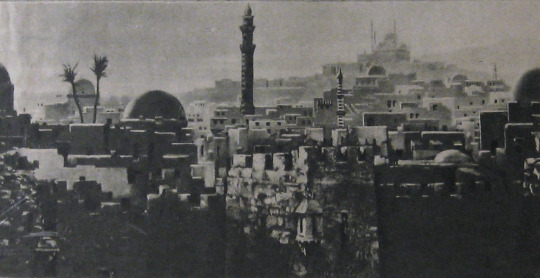
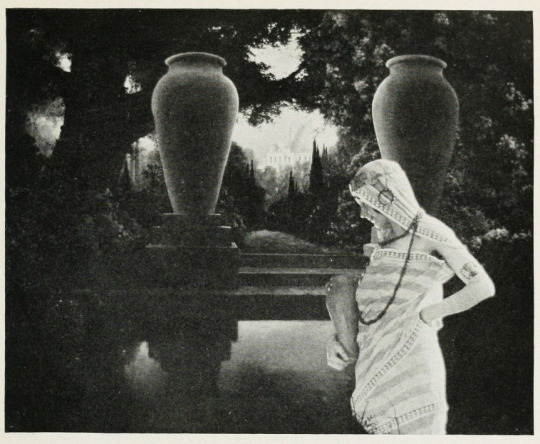
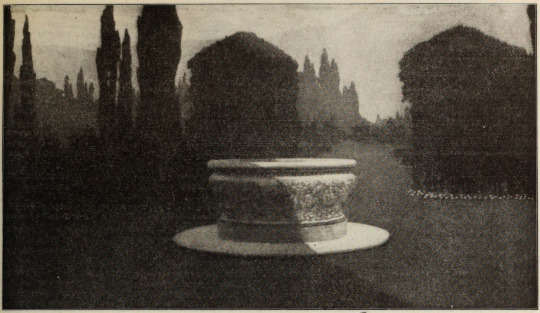
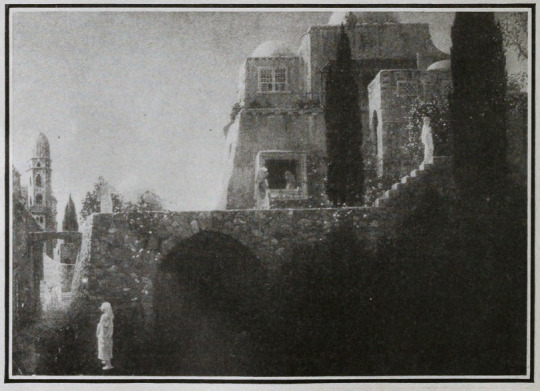
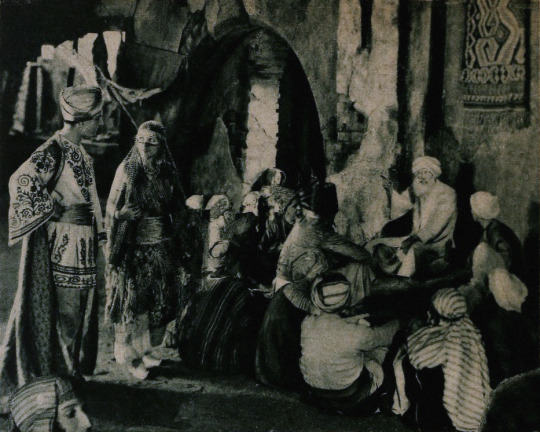
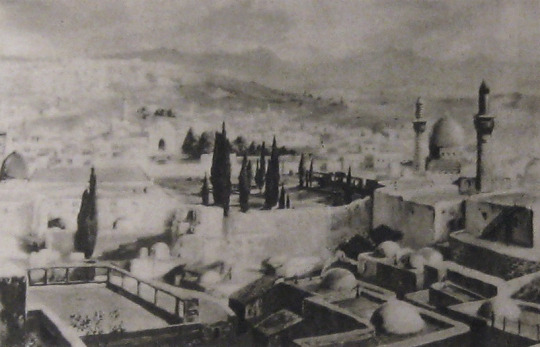

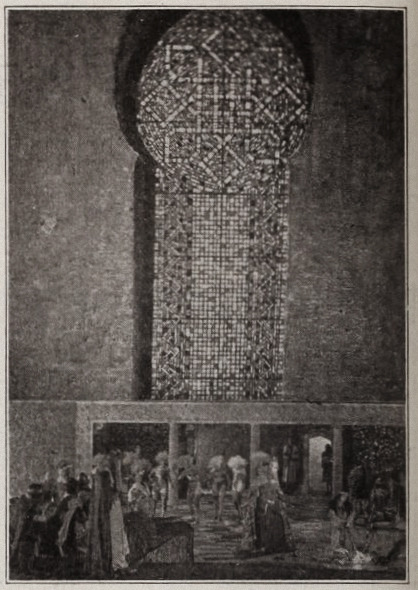
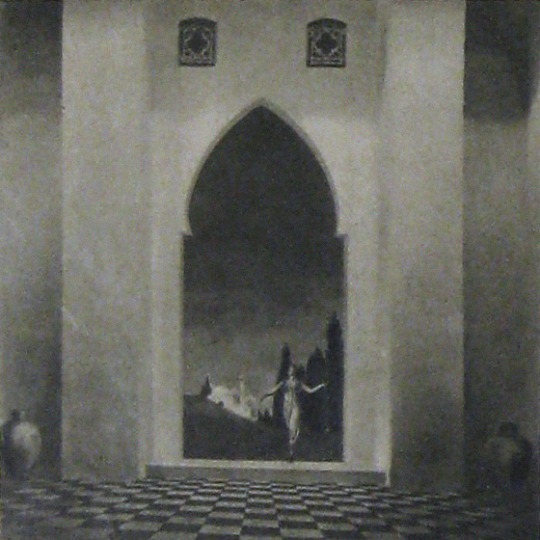
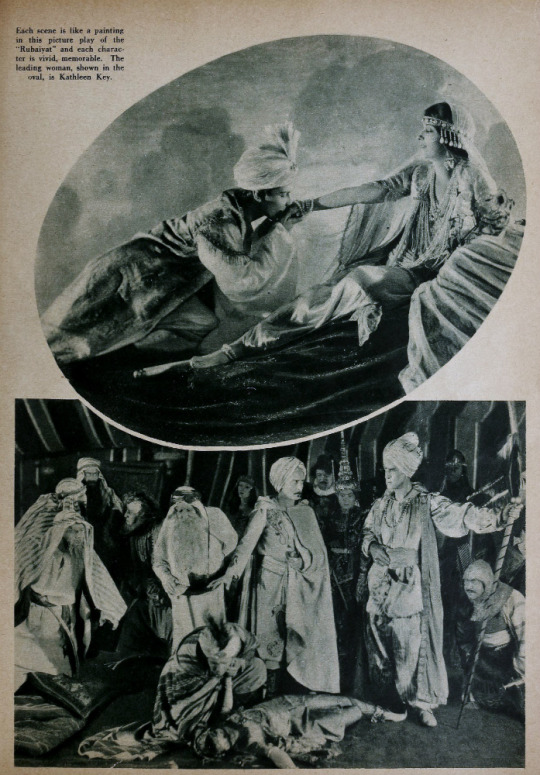
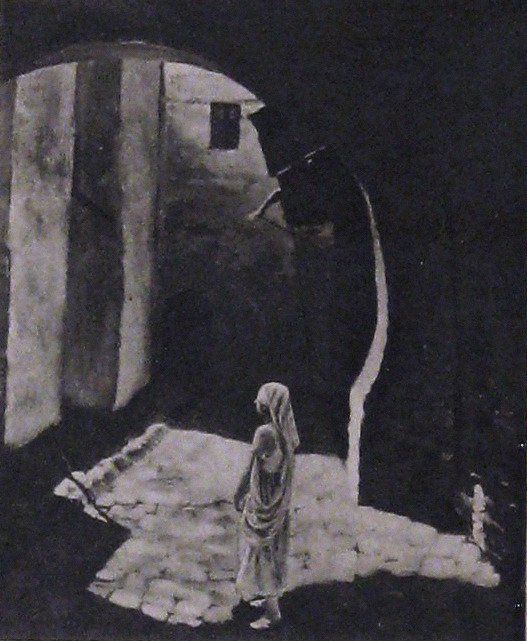
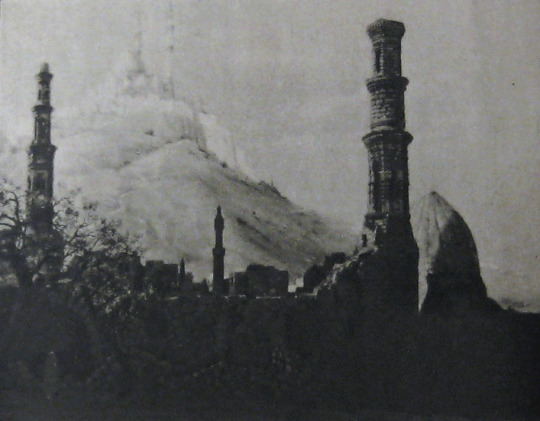
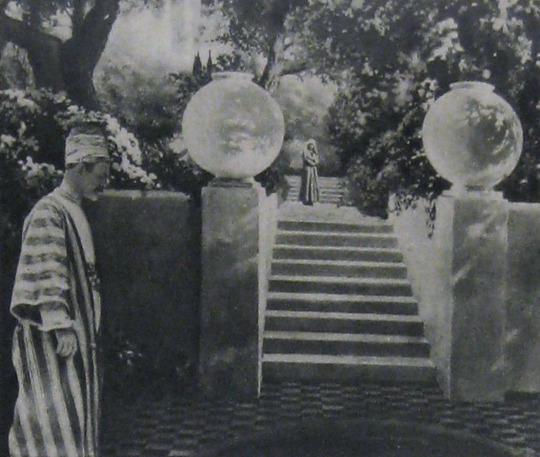
Alternate Titles: The Rubaiyat of Omar Khayyam, The Rubaiyat, Omar Khayyam, Omar
Direction: Ferdinand Pinney Earle; assisted by Walter Mayo
Scenario: Ferdinand P. Earle
Titles: Marion Ainslee, Ferdinand P. Earle (Omar), Louis Weadock (A Lover’s Oath)
Inspired by: The Rubaiyat of Omar Khayyam, as edited & translated by Edward FitzGerald
Production Manager: Winthrop Kelly
Camera: Georges Benoit
Still Photography: Edward S. Curtis
Special Photographic Effects: Ferdinand P. Earle, Gordon Bishop Pollock
Composer: Charles Wakefield Cadman
Editors: Arthur D. Ripley (The Rubaiyat of Omar Khayyam version), Ethel Davey & Ferdinand P. Earle (Omar / Omar Khayyam, the Director’s cut of 1922), Milton Sills (A Lover’s Oath)
Scenic Artists: Frank E. Berier, Xavier Muchado, Anthony Vecchio, Paul Detlefsen, Flora Smith, Jean Little Cyr, Robert Sterner, Ralph Willis
Character Designer: Louis Hels
Choreography: Ramon Novarro (credited as Ramon Samaniegos)
Technical Advisors: Prince Raphael Emmanuel, Reverend Allan Moore, Captain Dudley S. Corlette, & Captain Montlock or Mortlock
Studio: Ferdinand P. Earle Productions / The Rubaiyat, Inc. (Production) & Eastern Film Corporation (Distribution, Omar), Astor Distribution Corporation [States Rights market] (Distribution, A Lover’s Oath)
Performers: Frederick Warde, Edwin Stevens, Hedwiga Reicher, Mariska Aldrich, Paul Weigel, Robert Anderson, Arthur Carewe, Jesse Weldon, Snitz Edwards, Warren Rogers, Ramon Novarro (originally credited as Ramon Samaniegos), Big Jim Marcus, Kathleen Key, Charles A. Post, Phillippe de Lacy, Ferdinand Pinney Earle
Premiere(s): Omar cut: April 1922 The Ambassador Theatre, New York, NY (Preview Screening), 12 October 1923, Loew’s New York, New York, NY (Preview Screening), 2 February 1923, Hoyt’s Theatre, Sydney, Australia (Initial Release)
Status: Presumed lost, save for one 30 second fragment preserved by the Academy Film Archive, and a 2.5 minute fragment preserved by a private collector (Old Films & Stuff)
Length: Omar Khayyam: 8 reels , 76 minutes; A Lover’s Oath: 6 reels, 5,845 feet (though once listed with a runtime of 76 minutes, which doesn’t line up with the stated length of this cut)
Synopsis (synthesized from magazine summaries of the plot):
Omar Khayyam:
Set in 12th century Persia, the story begins with a preface in the youth of Omar Khayyam (Warde). Omar and his friends, Nizam (Weigel) and Hassan (Stevens), make a pact that whichever one of them becomes a success in life first will help out the others. In adulthood, Nizam has become a potentate and has given Omar a position so that he may continue his studies in mathematics and astronomy. Hassan, however, has grown into quite the villain. When he is expelled from the kingdom, he plots to kidnap Shireen (Key), the sheik’s daughter. Shireen is in love with Ali (Novarro). In the end it’s Hassan’s wife (Reicher) who slays the villain then kills herself.
A Lover’s Oath:
The daughter of a sheik, Shireen (Key), is in love with Ali (Novarro), the son of the ruler of a neighboring kingdom. Hassan covets Shireen and plots to kidnap her. Hassan is foiled by his wife. [The Sills’ edit places Ali and Shireen as protagonists, but there was little to no re-shooting done (absolutely none with Key or Novarro). So, most critics note how odd it is that all Ali does in the film is pitch woo, and does not save Shireen himself. This obviously wouldn’t have been an issue in the earlier cut, where Ali is a supporting character, often not even named in summaries and news items. Additional note: Post’s credit changes from “Vizier” to “Commander of the Faithful”]
Additional sequence(s) featured in the film (but I’m not sure where they fit in the continuity):
Celestial sequences featuring stars and planets moving through the cosmos
Angels spinning in a cyclone up to the heavens
A Potters’ shop sequence (relevant to a specific section of the poems)
Harem dance sequence choreographed by Novarro
Locations: palace gardens, street and marketplace scenes, ancient ruins
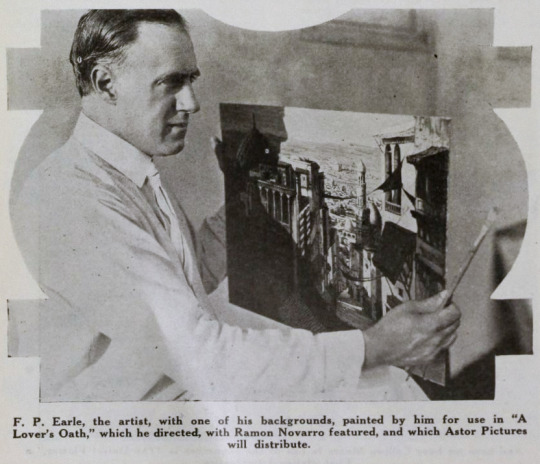
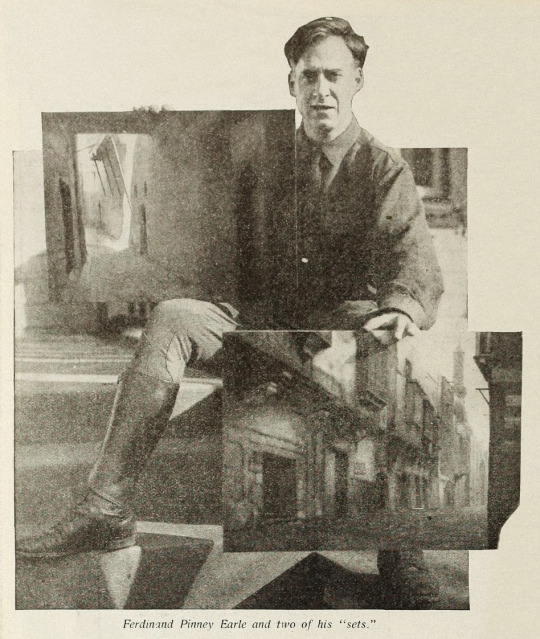
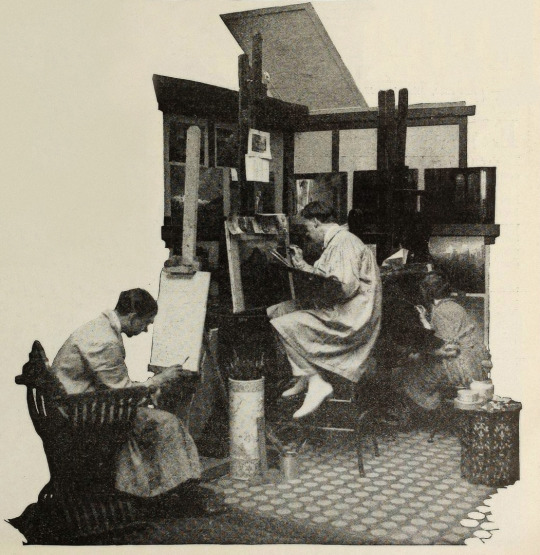


Points of Interest:
“The screen has been described as the last word in realism, but why confine it there? It can also be the last word in imaginative expression.”
Ferdinand P. Earle as quoted in Exhibitors Trade Review, 4 March 1922
The Rubaiyat of Omar Khayyam was a massive best seller. Ferdinand Pinney Earle was a classically trained artist who studied under William-Adolphe Bougueraeu and James McNeill Whistler in his youth. He also had years of experience creating art backgrounds, matte paintings, and art titles for films. Charles Wakefield Cadman was an accomplished composer of songs, operas, and operettas. Georges Benoit and Gordon Pollock were experienced photographic technicians. Edward S. Curtis was a widely renowned still photographer. Ramon Novarro was a name nobody knew yet—but they would soon enough.
When Earle chose The Rubaiyat as the source material for his directorial debut and collected such skilled collaborators, it seemed likely that the resulting film would be a landmark in the art of American cinema. Quite a few people who saw Earle’s Rubaiyat truly thought it would be:
William E. Wing writing for Camera, 9 September 1922, wrote:
“Mr. Earle…came from the world of brush and canvass, to spread his art upon the greater screen. He created a new Rubaiyat with such spiritual colors, that they swayed.” … “It has been my fortune to see some of the most wonderful sets that this Old Earth possesses, but I may truly say that none seized me more suddenly, or broke with greater, sudden inspiration upon the view and the brain, than some of Ferdinand Earle’s backgrounds, in his Rubaiyat. “His vision and inspired art seem to promise something bigger and better for the future screen.”
As quoted in an ad in Film Year Book, 1923:
“Ferdinand Earle has set a new standard of production to live up to.”
Rex Ingram
“Fifty years ahead of the time.”
Marshall Neilan
The film was also listed among Fritz Lang’s Siegfried, Chaplin’s Gold Rush, Fairbanks’ Don Q, Lon Chaney’s Phantom of the Opera and The Unholy Three, and Erich Von Stroheim’s Merry Widow by the National Board of Review as an exceptional film of 1925.
So why don’t we all know about this film? (Spoiler: it’s not just because it’s lost!)
The short answer is that multiple dubious legal challenges arose that prevented Omar’s general release in the US. The long answer follows BELOW THE JUMP!
Earle began the project in earnest in 1919. Committing The Rubaiyat to film was an ambitious undertaking for a first-time director and Earle was striking out at a time when the American film industry was developing an inferiority complex about the level of artistry in their creative output. Earle was one of a number of artists in the film colony who were going independent of the emergent studio system for greater protections of their creative freedoms.
In their adaptation of The Rubaiyat of Omar Khayyam, Earle and Co. hoped to develop new and perfect existing techniques for incorporating live-action performers with paintings and expand the idea of what could be accomplished with photographic effects in filmmaking. The Rubaiyat was an inspired choice. It’s not a narrative, but a collection of poetry. This gave Earle the opportunity to intersperse fantastical, poetic sequences throughout a story set in the lifetime of Omar Khayyam, the credited writer of the poems. In addition to the fantastic, Earle’s team would recreate 12th century Persia for the screen.
Earle was convinced that if his methods were perfected, it wouldn’t matter when or where a scene was set, it would not just be possible but practical to put on film. For The Rubaiyat, the majority of shooting was done against black velvet and various matte photography and multiple exposure techniques were employed to bring a setting 800+ years in the past and 1000s of miles removed to life before a camera in a cottage in Los Angeles.
Note: If you’d like to learn a bit more about how these effects were executed at the time, see the first installment of How’d They Do That.
Unfortunately, the few surviving minutes don’t feature much of this special photography, but what does survive looks exquisite:
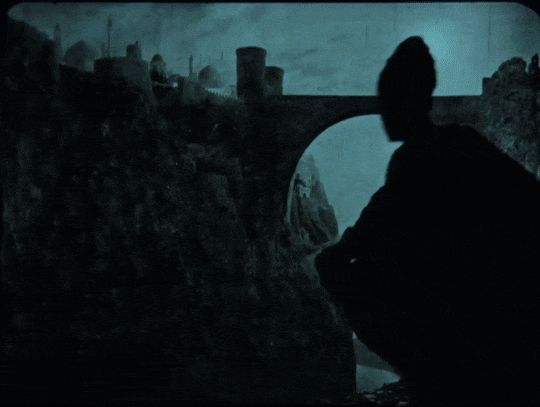
see all gifs here
Earle, knowing that traditional stills could not be taken while filming, brought in Edward S. Curtis. Curtis developed techniques in still photography to replicate the look of the photographic effects used for the film. So, even though the film hasn’t survived, we have some pretty great looking representations of some of the 1000s of missing feet of the film.

Nearly a year before Curtis joined the crew, Earle began collaboration with composer Charles Wakefield Cadman. In another bold creative move, Cadman and Earle worked closely before principal photography began so that the score could inform the construction and rhythm of the film and vice versa.
By the end of 1921 the film was complete. After roughly 9 months and the creation of over 500 paintings, The Rubaiyat was almost ready to meet its public. However, the investors in The Rubaiyat, Inc., the corporation formed by Earle to produce the film, objected to the ample reference to wine drinking (a comical objection if you’ve read the poems) and wanted the roles of the young lovers (played by as yet unknown Ramon Novarro and Kathleen Key) to be expanded. The dispute with Earle became so heated that the financiers absconded with the bulk of the film to New York. Earle filed suit against them in December to prevent them from screening their butchered and incomplete cut. Cadman supported Earle by withholding the use of his score for the film.
Later, Eastern Film Corp. brokered a settlement between the two parties, where Earle would get final cut of the film and Eastern would handle its release. Earle and Eastern agreed to change the title from The Rubaiyat of Omar Khayyam to simply Omar. Omar had its first official preview in New York City. It was tentatively announced that the film would have a wide release in the autumn.
However, before that autumn, director Norman Dawn launched a dubious patent-infringement suit against Earle and others. Dawn claimed that he owned the sole right to use multiple exposures, glass painting for single exposure, and other techniques that involved combining live action with paintings. All the cited techniques had been widespread in the film industry for a decade already and eventually and expectedly Dawn lost the suit. Despite Earle’s victory, the suit effectively put the kibosh on Omar’s release in the US.
Earle moved on to other projects that didn’t come to fruition, like a Theda Bara film and a frankly amazing sounding collaboration with Cadman to craft a silent-film opera of Faust. Omar did finally get a release, albeit only in Australia. Australian news outlets praised the film as highly as those few lucky attendees of the American preview screenings did. The narrative was described as not especially original, but that it was good enough in view of the film’s artistry and its imaginative “visual phenomena” and the precision of its technical achievement.
One reviewer for The Register, Adelaide, SA, wrote:
“It seems almost an impossibility to make a connected story out of the short verse of the Persian of old, yet the producer of this classic of the screen… has succeeded in providing an entertainment that would scarcely have been considered possible. From first to last the story grips with its very dramatic intensity.”
While Omar’s American release was still in limbo, “Ramon Samaniegos” made a huge impression in Rex Ingram’s Prisoner of Zenda (1922, extant) and Scaramouche (1923, extant) and took on a new name: Ramon Novarro. Excitement was mounting for Novarro’s next big role as the lead in the epic Ben-Hur (1925, extant) and the Omar project was re-vivified.
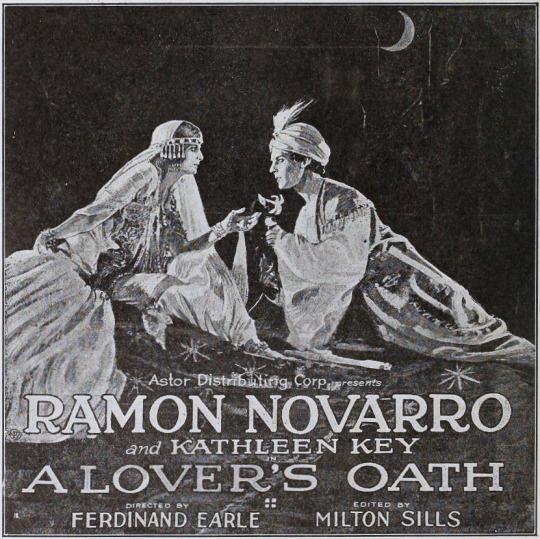
A new company, Astor Distribution Corp., was formed and purchased the distribution rights to Omar. Astor hired actor (note, not an editor) Milton Sills to re-cut the film to make Novarro and Key more prominent. The company also re-wrote the intertitles, reduced the films runtime by more than ten minutes, and renamed the film A Lover’s Oath. Earle had moved on by this point, vowing to never direct again. In fact, Earle was indirectly working with Novarro and Key again at the time, as an art director on Ben-Hur!
Despite Omar’s seemingly auspicious start in 1920, it was only released in the US on the states rights market as a cash-in on the success of one of its actors in a re-cut form five years later.
That said, A Lover’s Oath still received some good reviews from those who did manage to see it. Most of the negative criticism went to the story, intertitles, and Sills’ editing.
What kind of legacy could/should Omar have had? I’m obviously limited in my speculation by the fact that the film is lost, but there are a few key facts about the film’s production, release, and timing to consider.
The production budget was stated to be $174,735. That is equivalent to $3,246,994.83 in 2024 dollars. That is a lot of money, but since the production was years long and Omar was a period film set in a remote locale and features fantastical special effects sequences, it’s a modest budget. For contemporary perspective, Robin Hood (1922, extant) cost just under a million dollars to produce and Thief of Bagdad (1924, extant) cost over a million. For a film similarly steeped in spectacle to have nearly 1/10th of the budget is really very noteworthy. And, perhaps if the film had ever had a proper release in the US—in Earle’s intended form (that is to say, not the Sills cut)—Omar may have made as big of a splash as other epics.
It’s worth noting here however that there are a number of instances in contemporary trade and fan magazines where journalists off-handedly make this filmmaking experiment about undermining union workers. Essentially implying that that value of Earle’s method would be to continue production when unionized workers were striking. I’m sure that that would absolutely be a primary thought for studio heads, but it certainly wasn’t Earle’s motivation. Often when Earle talks about the method, he focuses on being able to film things that were previously impossible or impracticable to film. Driving down filming costs from Earle’s perspective was more about highlighting the artistry of his own specialty in lieu of other, more demanding and time-consuming approaches, like location shooting.
This divide between artists and studio decision makers is still at issue in the American film and television industry. Studio heads with billion dollar salaries constantly try to subvert unions of skilled professionals by pursuing (as yet) non-unionized labor. The technical developments of the past century have made Earle’s approach easier to implement. However, just because you don’t have to do quite as much math, or time an actor’s movements to a metronome, does not mean that filming a combination of painted/animated and live-action elements does not involve skilled labor.
VFX artists and animators are underappreciated and underpaid. In every new movie or TV show you watch there’s scads of VFX work done even in films/shows that have mundane, realistic settings. So, if you love a film or TV show, take the effort to appreciate the work of the humans who made it, even if their work was so good you didn’t notice it was done. And, if you’ve somehow read this far, and are so out of the loop about modern filmmaking, Disney’s “live-action” remakes are animated films, but they’ve just finagled ways to circumvent unions and low-key delegitimize the skilled labor of VFX artists and animators in the eyes of the viewing public. Don’t fall for it.
VFX workers in North America have a union under IATSE, but it’s still developing as a union and Marvel & Disney workers only voted to unionize in the autumn of 2023. The Animation Guild (TAG), also under the IATSE umbrella, has a longer history, but it’s been growing rapidly in the past year. A strike might be upcoming this year for TAG, so keep an eye out and remember to support striking workers and don’t cross picket lines, be they physical or digital!
Speaking of artistry over cost-cutting, I began this post with a mention that in the early 1920s, the American film industry was developing an inferiority complex in regard to its own artistry. This was in comparison to the European industries, Germany’s being the largest at the time. It’s frustrating to look back at this period and see acceptance of the opinion that American filmmakers weren’t bringing art to film. While yes, the emergent studio system was highly capitalistic and commercial, that does not mean the American industry was devoid of home-grown artists.
United Artists was formed in 1919 by Douglas Fairbanks, Charlie Chaplin, Mary Pickford, and D.W. Griffith precisely because studios were holding them back from investing in their art—within the same year that Earle began his Omar project. While salaries and unforgiving production schedules were also paramount concerns in the filmmakers going independent, a primary impetus was that production/distribution heads exhibited too much control over what the artists were trying to create.
Fairbanks was quickly expanding his repertoire in a more classical and fantastic direction. Cecil B. DeMille made his first in a long and very successful string of ancient epics. And the foreign-born children of the American film industry, Charlie Chaplin, Rex Ingram, and Nazimova, were poppin’ off! Chaplin was redefining comedic filmmaking. Ingram was redefining epics. Nazimova independently produced what is often regarded as America’s first art film, Salome (1923, extant), a film designed by Natacha Rambova, who was *gasp* American. Earle and his brother, William, had ambitious artistic visions of what could be done in the American industry and they also had to self-produce to get their work done.
Meanwhile, studio heads, instead of investing in the artists they already had contracts with, tried to poach talent from Europe with mixed success (in this period, see: Ernst Lubitsch, F.W. Murnau, Benjamin Christensen, Mauritz Stiller, Victor Sjöström, and so on). I’m in no way saying it was the wrong call to sign these artists, but all of these filmmakers, even if they found success in America, had stories of being hired to inject the style and artistry that they developed in Europe into American cinema, and then had their plans shot down or cut down to a shadow of their creative vision. Even Stiller, who tragically died before he had the opportunity to establish himself in the US, faced this on his first American film, The Temptress (1926, extant), on which he was replaced. Essentially, the studio heads’ actions were all hot air and spite for the filmmakers who’d gone independent.

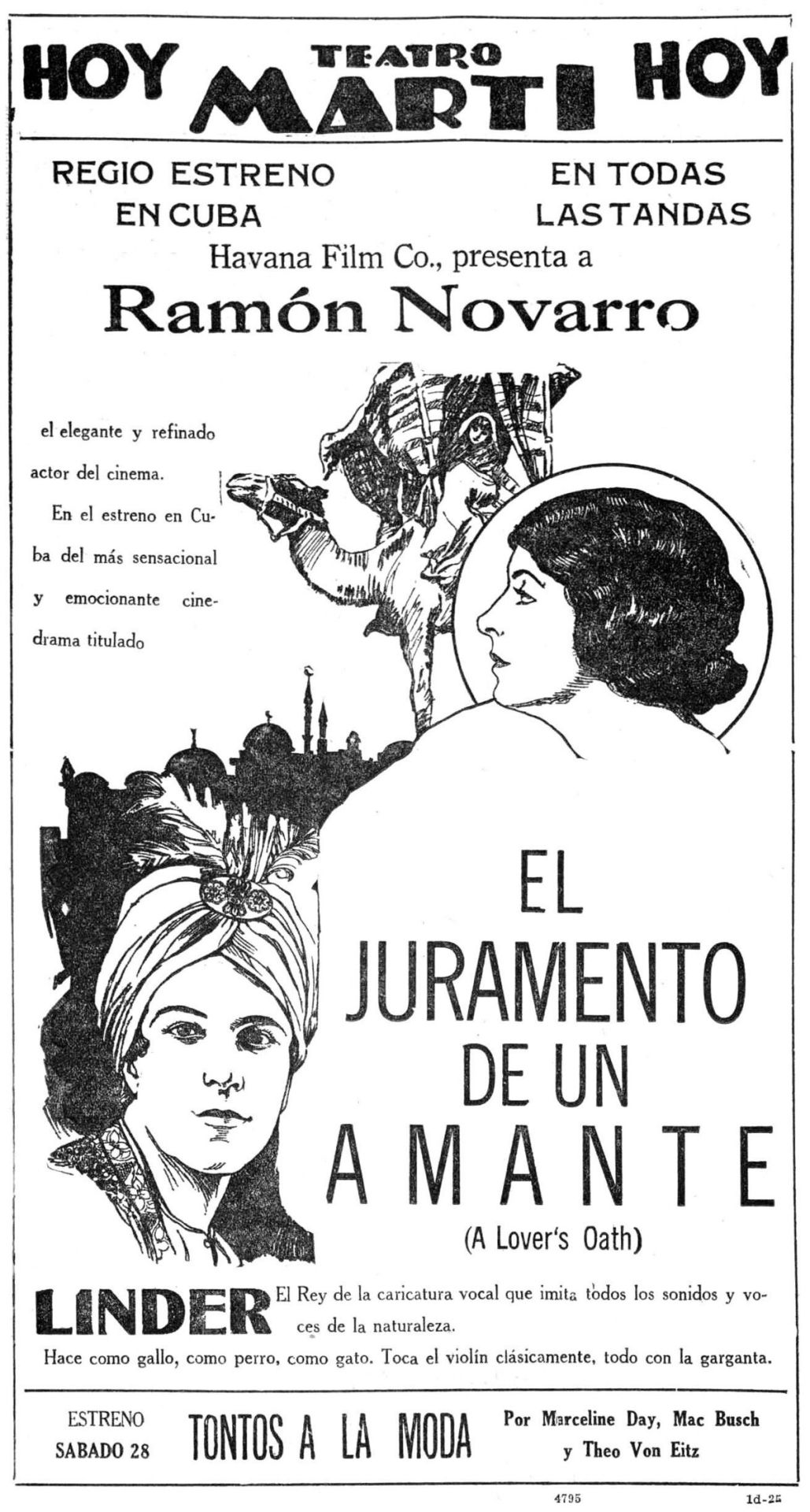
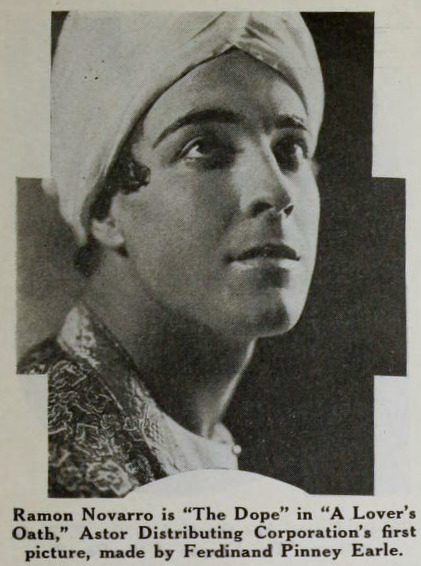
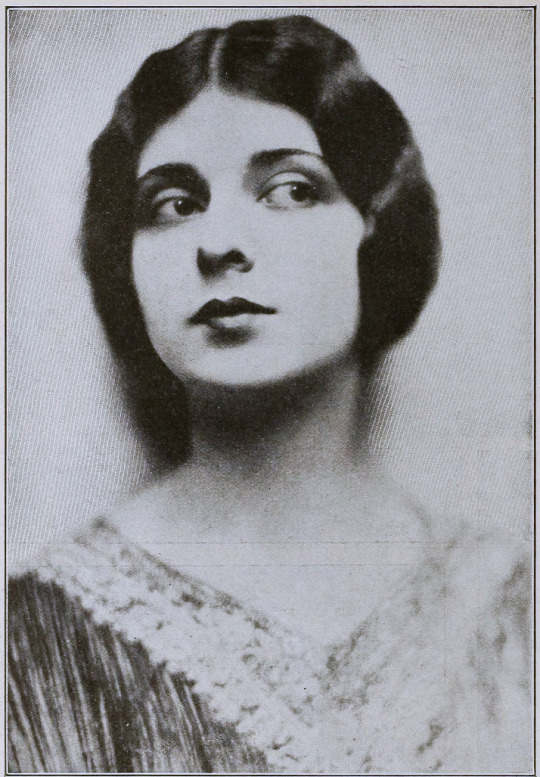
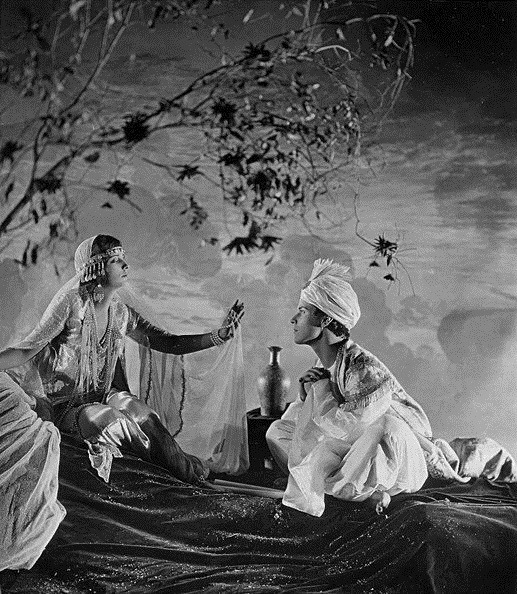
Finally I would like to highlight Ferdinand Earle’s statement to the industry, which he penned for from Camera in 14 January 1922, when his financial backers kidnapped his film to re-edit it on their terms:
MAGNA CHARTA
Until screen authors and producers obtain a charter specifying and guaranteeing their privileges and rights, the great slaughter of unprotected motion picture dramas will go merrily on.
Some of us who are half artists and half fighters and who are ready to expend ninety per cent of our energy in order to win the freedom to devote the remaining ten per cent to creative work on the screen, manage to bring to birth a piteous, half-starved art progeny.
The creative artist today labors without the stimulus of a public eager for his product, labors without the artistic momentum that fires the artist’s imagination and spurs his efforts as in any great art era.
Nowadays the taint of commercialism infects the seven arts, and the art pioneer meets with constant petty worries and handicaps.
Only once in a blue moon, in this matter-of-fact, dollar-wise age can the believer in better pictures hope to participate in a truely [sic] artistic treat.
In the seven years I have devoted to the screen, I have witnessed many splendid photodramas ruined by intruding upstarts and stubborn imbeciles. And I determined not to launch the production of my Opus No. 1 until I had adequately protected myself against all the usual evils of the way, especially as I was to make an entirely new type of picture.
In order that my film verison [sic] of the Rubaiyat of Omar Khayyam might be produced under ideal conditions and safeguarded from intolerable interferences and outside worries, I entered into a contract with the Rubaiyat, Inc., that made me not only president of the corporation and on the board of directors, but which set forth that I was to be author, production manager, director, cutter and film editor as well as art director, and that no charge could be made against the production without my written consent, and that my word was to be final on all matters of production. The late George Loane Tucker helped my attorney word the contract, which read like a splendid document.
Alas, I am now told that only by keeping title to a production until it is declared by yourself to be completed is it safe for a scenario writer, an actor or a director, who is supposedly making his own productions, to contract with a corporation; otherwise he is merely the servant of that corporation, subject at any moment to discharge, with the dubious redress of a suit for damages that can with difficulty be estimated and proven.
Can there be any hope of better pictures as long as contracts and copyrights are no protection against financial brigands and bullies?
We have scarcely emerged from barbarism, for contracts, solemnly drawn up between human beings, in which the purposes are set forth in the King’s plainest English, serve only as hurdles over which justice-mocking financiers and their nimble attorneys travel with impunity, riding rough shod over the author or artist who cannot support a legal army to defend his rights. The phrase is passed about that no contract is invioliable [sic]—and yet we think we have reached a state of civilization!
The suit begun by my attorneys in the federal courts to prevent the present hashed and incomplete version of my story from being released and exhibited, may be of interest to screen writers. For the whole struggle revolves not in the slightest degree around the sanctity of the contract, but centers around the federal copyright of my story which I never transferred in writing otherwise, and which is being brazenly ignored.
Imagine my production without pictorial titles: and imagine “The Rubaiyat” with a spoken title as follows, “That bird is getting to talk too much!”—beside some of the immortal quatrains of Fitzgerald!
One weapon, fortunately, remains for the militant art creator, when all is gone save his dignity and his sense of humor; and that is the rapier blade of ridicule, that can send lumbering to his retreat the most brutal and elephant-hided lord of finance.
How edifying—the tableau of the man of millions playing legal pranks upon men such as Charles Wakefield Cadman, Edward S. Curtis and myself and others who were associated in the bloody venture of picturizing the Rubaiyat! It has been gratifying to find the press of the whole country ready to champion the artist’s cause.
When the artist forges his plowshare into a sword, so to speak, he does not always put up a mean fight.
What publisher would dare to rewrite a sonnet of John Keats or alter one chord of a Chopin ballade?
Creative art of a high order will become possible on the screen only when the rights of established, independent screen producers, such as Rex Ingram and Maurice Tourneur, are no longer interferred with and their work no longer mutilated or changed or added to by vandal hands. And art dramas, conceived and executed by masters of screen craft, cannot be turned out like sausages made by factory hands. A flavor of individuality and distinction of style cannot be preserved in machine-made melodramas—a drama that is passed from hand to hand and concocted by patchworkers and tinkerers.
A thousand times no! For it will always be cousin to the sausage, and be like all other—sausages.
The scenes of a master’s drama may have a subtle pictorial continuity and a power of suggestion quite like a melody that is lost when just one note is changed. And the public is the only test of what is eternally true or false. What right have two or three people to deprive millions of art lovers of enjoying an artist’s creation as it emerged from his workshop?
“The Rubaiyat” was my first picture and produced in spite of continual and infernal interferences. It has taught me several sad lessons, which I have endeavored in the above paragraphs to pass on to some of my fellow sufferers. It is the hope that I am fighting, to a certain extent, their battle that has given me the courage to continue, and that has prompted me to write this article. May such hubbubs eventually teach or inforce a decent regard for the rights of authors and directors and tend to make the existence of screen artisans more secure and soothing to the nerves.
FERDINAND EARLE.
---
☕Appreciate my work? Buy me a coffee! ☕
Transcribed Sources & Annotations over on the WMM Blog!
See the Timeline for Ferdinand P. Earle's Rubaiyat Adaptation
#1920s#1923#1925#omar khayyam#ferdinand pinney earle#ramon novarro#independent film#american film#silent cinema#silent era#silent film#classic cinema#classic movies#classic film#film history#history#Charles Wakefield Cadman#cinematography#The Rubaiyat#cinema#film#lost film
48 notes
·
View notes
Text
Sebastian Stan and Jeremy Strong Talk Becoming Donald Trump and Roy Cohn in The Apprentice
BY TAYLOR ANTRIM PHOTOGRAPHY BY ANTONIO YSURSA

Jeremy Strong and Sebastian Stan (both in their own clothes) play Roy Cohn and Donald Trump in Ali Abbasi’s The Apprentice, in theaters this Friday, October 11.Photographed by Antonio Ysursa
You may have heard something about The Apprentice—the Donald Trump biopic that premiered at Cannes to great fanfare, and not a little controversy. Was director Ali Abbasi’s 1970s set film, starring Sebastian Stan as Trump and Jeremy Strong as his mentor, the New York attorney and ruthless power broker Roy Cohn, too sympathetic to the striving, scheming characters at its center? (Maybe not: After Cannes, Trump’s lawyers threatened to sue.) Certainly when you watch The Apprentice, which opens in theaters Friday, it’s impossible not to be astonished, and enthralled, by the performances of Stan and Strong, who turn real-life hyper-polarizing figures into fascinating antiheroes.
But make no mistake: The Apprentice is a warning. This is a movie, written by the journalist Gabriel Sherman, that will leave you chilled. Here is the story of Trump’s rise, the lessons he learned from Cohn, and a portrayal of power at all costs—what it drives a person to and how it corrupts.
Vogue invited Stan and Strong onto The Run-Through with Vogue to talk about their performances, how the film came together, and why Americans should see it before the November 5 election. Below, read an excerpt of the conversation Vogue.com editor Chloe Malle and I conducted with the two actors in the podcast studio.

Photographed by Antonio Ysursa
Taylor Antrim: We have three weeks until the election and I want people to know why they should go see this movie. A lot of people have Trump fatigue, and The Apprentice is two hours of being deep in his company.
Jeremy Strong: This movie is very loaded, right? It’s hard to talk about it in a non-partisan way... But I think the movie has as much in common with Midnight Cowboy, or Boogie Nights, or even, like, Scarface. It's more those things than it is some political polemic.
You know, I read something the other day by this journalist who lived in Chicago, Sydney Harris, who said, “History repeats itself, but in such cunning disguise that we never detect the resemblance until the damage is done.” And I guess I feel that the stakes are so fucking high right now in a way that they have never been, maybe since the American Civil War. And so it’s worth understanding where Trump came from and what he really is and believes.
Antrim: I also want to make sure people understand how radical this movie is, that it makes you participate in the humanity of people that you may feel you can write off. You know, like, we may understand that Trump is a monster. Or we understand that Roy Cohn was a monster, but the movie makes you participate in what they were like as human beings.
Strong: There’s a reason why it makes people so deeply, profoundly uncomfortable to relate to them that way. It’s much easier to be like, Well, they’re monsters…why would I want to feel anything or have any empathy or understanding? And I guess I find that really interesting.
Antrim: Sebastian, what was going through your mind when you were asked to play Trump? Because I would imagine that a lot of actors would just say no, or be scared of this, or be like, Are you crazy?
Sebastian Stan: I guess I had enough people saying maybe that this movie wasn’t a good idea, that it started to sound to me like a good idea. And then I think it was more, okay, well, if the right person can come and play Roy Cohn, then it’s really going to be exciting—and obviously then we found Jeremy. The director, Ali Abbasi, being Iranian, and growing up in Copenhagen, and being an outsider, having that lens on this—that was what was interesting to me. He wasn’t playing for the blue or the red team, he was looking from the outside in, and I think we were too far in the trenches on our own over here.

Photographed by Antonio Ysursa

Photographed by Antonio Ysursa
Chloe Malle: Did you have any sense from the beginning that a movie about Trump would be controversial, dangerous, difficult to get out there
Strong: Totally. I mean, you know that you’re playing with fire—how could we not know that? But I don’t think that had any impact on how we approached it as artists. I think we related to it as a piece of work and as a film about these two guys and their relationship.
Malle: It had trouble getting distribution coming out of Cannes, and then Trump’s lawyers threatened to sue. Did you anticipate any of that?
Stan: Of course, it seems kind of predictable that way. But I didn’t anticipate how hard it was to get the financing.
Strong: Also, if I’m being honest, I think I expected the movie to get scooped up out of Cannes. But then everyone was frankly scared to touch it. I think they were afraid of litigation and repercussions and afraid of Trump, and so now it’s opening this Friday on 1,500 screens or something like that, and I do think that this is something that is imperative for people to see.
Antrim: What I resonated so much to is that the movie is not a piece of propaganda, or it doesn’t have a particularly straightforward message, to me. I mean, it was actually a quite discomfiting film to watch for that reason.
Strong: I like to believe that we all have instincts towards other human beings. And I think if you watch this film, it’s not just learning about Trump as it is about learning about ourselves through him.
Antrim: That was definitely my experience of it. [To Stan:] And I find it interesting that your character, Trump, is someone you empathize, if not sympathize, with in the beginning of the movie. I’m thinking about when he's knocking on doors, collecting rent, that kind of thing.
Stan: A lot of people didn’t know that he did that.
Antrim: And then by the end of the movie, Jeremy, your character, Roy Cohn, is this incredibly tragic figure.
Strong: Yeah, in this case, the apprentice sort of eclipses the mentor, which is what happened historically. But I think, you know, what was exciting and challenging about this is to take these two monolithic people and say they’re not monoliths. They’re human beings with a history and a past, who made choices, and different things shaped them, and let’s examine what those things were.
Antrim: Tthe transformation that Sebastien achieves in this movie is uncanny. It’s physical. It’s verbal. It’s the way he moves.
Malle: And you make him very appealing.
Stan: I mean, look, if you go back to the Oprah show that he did in 1988, when she had him and Ivana on the show. I mean, he’s very seductive. He’s very convincing. He comes across strong. He comes across as protective of the country. I mean those are qualities that we still see today. And I think even when you dial further back, right, you’re talking about someone that came in with ideas and I guess what I was thrown by was just the amount of potential that I felt like he had at a certain point. And I don’t think there’s any fault in admitting that, because by admitting that then you can kind of see what the turnout was—and that is tragic, in some ways
Malle: Jeremy, I want to know what the most surprising thing about Roy Cohn was for you. Because I was very excited to see his frog collection.
Strong: I mean, the frogs are really a stunner. He had a room full of frog figurines and stuffed frogs and, you know, a Mickey Mouse sign on his door that said “Roy.” He had a kind of arrested development. He was very infantilized, even in his adulthood. And he lived in a consequence-less universe. He is a grab bag of surprises. And a kind of terrifying one. So you might talk about him as this monster, but for Roy, he was, like, going to Le Cirque, eating his Bumble Bee tuna that they kept for him there. He was going waterskiing most days of the year on the Hudson River.
Malle: Really?
Strong: He was at Studio 54. Like, he was pumped. And he was a brilliant lawyer, and he represented everybody. And everybody went to his parties on 68th Street. And he was capable of the utmost ruthlessness. And mendacity and brutality and remorseless destruction of people’s lives.

Photographed by Antonio Ysursa
Malle: I loved the fashion in the movie. Were you involved in those decisions?
Strong: Roy was incredibly vain. You know, he did 200 sit-ups every morning. He basically starved himself. He weighed himself every day. He maintained his weight. I knew exactly what he weighed. And it’s interesting how much you can lose the character if you are in the wrong cut of a suit. He had these Dunhill suits that fit a certain way that accentuated a certain kind of muscularity that he thought of as his most defining feature—not that he was a muscular guy, but his kind of bellicose thing.
Malle: I have to say, at Vogue.com, we are big fans of your outfits. We think that you have excellent style. The youth at Vogue.com are big, big fans of Jeremy Strong’s red carpet looks.
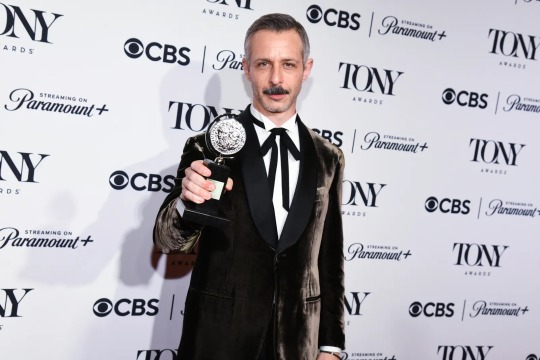
Strong in a custom velet tuxedo and ribbon bow tie from Loro Piana at the 2024 Tony Awards. Photo: Getty Images
Strong: I mean…Thank you. It’s just accident and chance. I’m very intuitive, you know? I’ve gone through phases where, like, there was a time where I only wore gray for a couple years. I only wore navy.
Malle: A couple of years!?
Strong: I only wore navy for a couple of years.
Malle: Good grief, okay.
Strong: I had a period as a child where I wore neon only.
Antrim: Oh yeah, I had one of those too.
Strong: You know, we all did. But I appreciate and love clothes. And then the rest is kind of like guided by instinct.
Malle:. Sebastian, how would someone dress if they were playing you in a movie?
Stan: Just by wearing…black, I guess. Michael Fisher is my stylist. I tell him sometimes that I don’t know if those sneakers work, but other than that… Sometimes I’m like, really, Michael? I mean, you saw the whole pink thing that I wore two years ago at that Met Ball? I mean, that’s not what I would have worn, ever.

Stan wearing Valentino pink at the 2022 Met Gala. Photo: Getty Images
Strong: I thought that was kind of dope.
Stan: I mean, it was great, but my mom, still to this day…she’s got a neighbor from Italy and she’s like, You look atrocious. How could you do this? Anyway.
Malle: Well, we’re still talking about it!
19 notes
·
View notes
Text
DoL PC Profile: Maev the Nightshade
[as of 14th Feb - in-game date]




Maev the Nightshade
Quotes
"That's my secret...I'm always horny."
"Bitch, these panties are handstitched lace, cough up if you want 'em."
"Yeah, yeah...am I getting paid for it, though?"
Appearance
Gender: Female | Appearance: Androgynous
Body size: Small | shape: Slender
Titty size: Full | Butt size: Cushioned
Eye Color: Hazel | Hair color: Black (Two-toned, Purple Low Ombre)
Canonically strong thighs
Stats
Purity - 5 | Beauty - 5 | Physique - 6 | Willpower - 2 | Awareness - 4 | Promiscuity - 4 | Exhibitionism - 6 | Deviancy - 0
Lost all virginities to Whitney in this order:
Oral > First Kiss > Vaginal > Anal...and Handholding (so lewd lol)
Personality
Background: Lustful (perpetually horny and wet)
- Chill (mostly), clever, with a rebellious streak
- Chill in the streets (tho slightly bratty), sub in the sheets
- Won't hesitate to punch a bitch or a perv
- Secretly a masochist
- Sweet tooth and Spicy tongue
- Interests: Fashion, Thrill-seeking, Knowledge, Nature
- Hobbies: Shopping, getting into trouble (with Whitney), cooking, gardening, and nature walks
Backstory
- Been an orphan for as long as she can remember
- Scared Robin a lot when they were kids...they became friends thru games tho
- Followed Bailey around a lot when she was younger (was flicked on the forehead for it)
- The cool big sis at the orphanage (one of the smallest in size tho haha)
- Almost got arrested for shoplifting in her early teens
- Loved doing somersaults and dancing as a kid
- Was teased for reading a lot, so she reads in the privacy of her room/the Library
School life
- Favourite subjects: English & Housekeeping
- Highly popular but tends to spend time alone
- Top A* Student in Science, Maths, English, and History
- Detention Club ™
- Became a cheerleader for fitness + stunts
- Top hangout spots: Rooftops, Library, and Housekeeping Classroom
Relations
Whitney's Babydoll (LI)
Robin's Big Sis (Protector)
Sydney's New Weird Friend
Kylar's Muse
Darryl's Inspiration
Charlie's Delightful Dancer
Sam's Top Chef
Briar's Flirty Star
Niki's Rising Model
Town Rep: Lewd Girl
Criminal Underworld: Meat
Current professions:
- Chef and Waitress (Ocean Breeze Cafe)
- Danube Spa Masseur
- Brothel Dancer and Showgirl (goes by the name 'Bella')
- Club Dancer and Bartender (goes by the name 'Donna') - Blood Moon only
- Amateur Model (Niki's Photography Studio)
- Aspiring Socialite and High-Class Escort - ongoing
4 notes
·
View notes
Text
Thor: Love and Thunder
Thor: Love and Thunder is a 2022 American superhero film based on the Marvel Comics character Thor. Produced by Marvel Studios and distributed by Walt Disney Studios Motion Pictures, it is the sequel to Thor: Ragnarok (2017) and the 29th film in the Marvel Cinematic Universe (MCU). The film was directed by Taika Waititi, who wrote the screenplay with Jennifer Keiten Robinson, and stars Chris Hemsworth as Thor alongside Christian Bale, Tessa Thompson, Jamie Alexander, Waititi, Russell Crowe and Natalie Portman. In the film, Thor tries to find inner peace, but must return to action and recruit Valkyrie (Thompson), Korg (Waititi), and Jane Foster (Portman) — who is now the mighty Thor — to stop Gor the God Butcher (Bell). ) from eliminating all the gods.
Hemsworth and Waititi discussed plans for a Ragnarok sequel by January 2018. Love and Thunder was announced in July 2019, with Hemsworth, Waititi and Thompson all returning, as well as Portman who did not appear in Ragnarok. Waititi wanted to separate Love and Thunder from Ragnarok, creating a romance film and 1980s-inspired adventure. He adapted elements of Jason Aaron's run in the 2010s Thor comic books, which similarly debuted Gor and saw Foster take on Thor's mantle and powers while undergoing cancer treatment. In February 2020, Robinson joined to contribute to the script, and further casting was announced later that year, including an appearance in Guardians of the Galaxy. Production was expected to begin in late 2020 but was delayed by the COVID-19 pandemic. Filming finally began in January 2021 in Sydney, Australia with Barry Idoin as director of photography and finished in early June.
Thor: Love and Thunder premiered at the El Capitan Theater in Hollywood on June 23, 2022, in Los Angeles and was released in the United States on July 8 as part of the MCU's fourth season. The film received mixed reviews from critics, who praised the film for its light-heartedness, action sequences, and performances by Hemsworth, Bale, and Portman, but criticized the screenplay and tonal inconsistencies; Although its humor and visual impact were met with polarized reactions,[6] many critics considered the film inferior to Ragnarok. Love and Thunder grossed $760.9 million worldwide, making it the eighth-highest-grossing film of 2022.
#action adventure#marvel#movies#marvel series#action movies#hollywood#thor love and thunder#thor 4#thor 4 cast
2 notes
·
View notes
Text
The Best Locations for Stunning Maternity Photography in Sydney
Pregnancy is beautiful and full of excitement and anticipation every moment. And this is a fantastic opportunity to record the best time of life with maternity photography Sydney so that you can enjoy them throughout your lifetime. With serene nature landscapes or concrete jungle backdrops, you'll find innumerable breath-taking locations across Sydney perfect for your maternity photoshoot. Here's a selection of the finest hotspots where you can catch your beaming pregnancy glow.
1. Royal Botanic Garden
The Royal Botanic Garden is a beautiful location that has been popular for its greenery and colorful flowers. The garden features stunning views of Sydney Harbour, creating a peaceful setting that complements the beauty of pregnancy perfectly. The flowers add pops of color, and the towering trees create a sense of intimacy for a maternity photoshoot Sydney. This location provides a serene ambiance that is best suited for those tender moments during your celebration into motherhood.
2. Bondi Beach
More casual vibes can be sought when planning your pregnancy photography Sydney: Bondi Beach might turn out to be a beautiful option. The golden sands and rolling waves and breath-taking sunset provide a dynamic background filled with a carefree vibe. A beach setting would thus allow for playful yet stunning shots while at the same time emphasizing the natural glow of your pregnancy. Of course, the Bondi Icebergs Club does add an element of style into your maternity studio photoshoot.
3. The Rocks
The Rocks, with its cobbled streets and historical charm, is the perfect urban backdrop for those who want a blend of old and new aesthetic beauty. This lively precinct is steeped in culture and offers a myriad of wonderful backdrops, from historic buildings to breathtaking harbor scenes. The old-world charm with modern Sydney creates an absolute fairytale environment for maternity photoshoots in Sydney. Your images will tell a unique tale of your pregnancy in this atmospheric setting.
4. Dear Harbour
Darling Harbour is a busting cityscape with incredible views of the waterfront, the city's modern architecture, and lively surroundings that will make your maternity photo shoot look chic in a very urban way. Colored lights and reflections create magical ambience, and for the golden hour shots, it is just something magic. Capturing your pregnancy in Darling Harbour can get dynamic images that show the excitement at the beginning of this new journey of yours.
5. Centennial Park
Another fantastic outdoor maternity photography Sydney location is Centennial Park. The vast open spaces, serene lakes, and well-manicured gardens in this park create ample scope for creative shots. You can opt for the lush greenery or the beautiful floral displays at Centennial Park to make your maternity photoshoot Sydney more natural and beautiful. The park is also a great place to walk around and relax while you are capturing memories.
6. Milk Beach
For a quieter beach experience, visit Milk Beach in Vaucluse. The secret gem provides a beautiful atmosphere with breathtaking views of the Sydney skyline and glistening waters. Its secluded atmosphere makes it perfect for an intimate maternity studio photoshoot to capture candid and emotive moments. This makes Milk Beach an excellent choice for mothers to be looking for a peaceful environment in which to celebrate their journey.
7. Sydney Opera House and Harbour Bridge
No list of photography locations in Sydney would be complete without mentioning the iconic Sydney Opera House and Harbour Bridge. These landmarks are not just symbols of the city but offer stunning backdrops for your maternity photography Sydney. Imagine posing with the majestic Opera House as your backdrop, showcasing the architectural beauty while celebrating your growing family. It captures your pregnancy against such iconic scenery; it can really result in incredible images that really reflect this moment in your life.
Sydney is filled with beautiful locations that really provide the best backdrop for your maternity photography Sydney. Either you choose natural tranquility of parks and beaches, or you may opt for the vibrant energy of the city, each of them offers great opportunities to celebrate your pregnancy journey. A maternity photoshoot Sydney is not merely about the picture; it's about how it will preserve the emotions and experiences you'll have, which would remain with you and your family for generations to come. So grab that camera of yours or hire a professional photographer, and let the beauty of Sydney help tell your pregnancy story!
#maternity photography sydney#maternity photoshoot sydney#maternity studio photoshoot#pregnancy photography sydney
0 notes
Text
Capturing Timeless Moments with a Sydney Family and Newborn Photographer
In a city as vibrant and diverse as Sydney, every family has a unique story that deserves to be told. From the first smiles of a newborn to the joyful chaos of family gatherings, these moments are precious and fleeting. That's why finding the right photographer is crucial for preserving these memories beautifully. At Bijou Bubs Photography, we are specializes in creating timeless portraits that celebrate the love, laughter, and bonds that make your family one of a kind.

Why Choose a Sydney Family Photographer?
A family portrait is more than just a photograph; it's a way to capture and cherish the unique dynamics and personalities of your loved ones. Here are some reasons to consider working with a professional Sydney family photographer:
Expertise and Creativity: A professional photographer brings expertise in composition, lighting, and styling, ensuring that your portraits reflect your family's personality while being visually stunning.
Creating Memories: By turning everyday interactions into art, a family photographer helps you capture those joyful moments that you will treasure for generations.
Personalized Experience: Each family is unique, and a good photographer will tailor the session to meet your family's style and preferences.
Newborn Photographer in Sydney
Welcoming a newborn into your family is a truly magical experience. Those early days, marked by sleepy smiles and tiny fingers, pass in the blink of an eye. A newborn photography session with Bijou Bubs Photography provides you with a beautiful keepsake of this special time.
What to Expect from Your Session:
Safety and Comfort: Your baby's safety and comfort are our top priority. Our sessions are conducted in a warm, relaxed environment to keep your little one happy and cozy.
Natural, Timeless Style: We focus on natural, soft colors and classic poses that highlight your baby's delicate features while avoiding overly complicated props or setups.
Family Involvement: Siblings and parents are encouraged to join in the session, creating family portraits that celebrate your expanding family.
Book Your Session Today
Choosing the right photographer is essential for capturing the magic of your family's journey. At Bijou Bubs Photography, we believe in creating photographs that you will treasure forever, reflecting your family's joy, love, and connection.
Ready to capture these timeless moments? Visit https://bijoububsphotography.com.au/ to learn more about our family photography sessions and newborn photographer Sydney, book your session today. Let’s create beautiful memories together!
#newborn photographer Sydney#Sydney family photographer#eastern suburbs newborn photographer#photography studio alexandria
0 notes
Text
Monday's Photography Inspiration - Charles Kerry
Charles Kerry was an Australian photographer noted for his photographs that contributed to the development of the Australian national psyche and romance of the bush. He was born on Bobundra Station in the Monaro region of New South Wales and began working in the Sydney photo studio of A.H. Lamartiniere in 1875. When Lamartiniere fled from creditors a few years later, Kerry took charge of the…
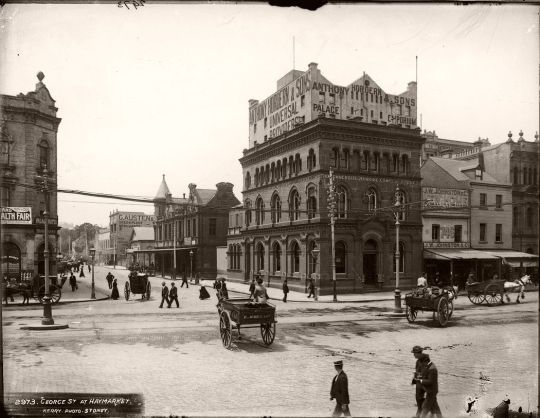
View On WordPress
#Charles Kerry#Charles Kerry Photography#inspiration of the week#Monday inspirations#Monday Photography inspiration#Monday’s photography inspiration
5 notes
·
View notes
Text




Noma Kyoto by chef René Redzepi
Danish OEO Studio has completed the interiors for Noma Kyoto in Japan. Following the success of pop-ups in Tokyo, Sydney and Tulum, noma has teamed up with Ace Hotel Kyoto to transform one of the existing restaurants into Noma Kyoto. OEO Studio worked closely with the noma team and with noma’s residence stylist Christine Rudolph to create a space that reflects noma and the culinary vision for Noma Kyoto.
The transformation of the existing restaurant space includes a high ceiling main dining area with views out to a garden oasis, alongside a secondary dining room and two separate private dining rooms. The design brief was to capture the spirit of noma, infused with the design traditions of Japan and Kyoto. All elements combine to pay tribute to the cultural context but frame the unexpected – the result is a bold interior that sets the scene for an extraordinary dining experience.
Year of completion: 2023
Photography by Ditte Isager
1 note
·
View note
Text
Pole dancing photography captures the grace, strength, and artistry of this incredible sport.
Pole dancing has blossomed far beyond the traditional images. It has transformed into being an incredibly powerful form of artistic expression, combining athleticism with dance and creativity. At its heart lies pole dancing photography, through which the grace and the strength embodied in every pose are captured. In cities like Sydney, professional pole dance photography is gaining popularity, allowing dancers to highlight their skills in stunning visual narratives.
The essence of pole dancing is a sport that demands a lot of strength, flexibility, and artistic flair. Dancers engage in routines that show off their physical abilities while often telling deep emotional stories. However, the challenge lies in how to convey these elements outside of a performance. That is where professional pole dance photography comes in.
What Makes Pole Dancing Photography Unique?
Pole dancing photography sydney is different because it captures the breathtaking moments of a dancer's routine in a single frame. It doesn't just focus on the technical skills of the dancer but also the beauty and poetry in their movements. A photographer needs finesse and skill to capture the swirl of fabric in the air, the tension of a climactic pose, or the quiet before a big trick unfolds.
In Sydney, people are increasingly demanding high-quality pole dancing photography. Photographers specializing in this field appreciate not just the physicality of the sport but also its artistry. They often work closely with dancers to understand their style and what they hope to say through their portraits. This collaboration results in pictures that are not only beautiful but also true to the unique voice of the dancer.
The Role of Professional Pole Dance Photography
Professional pole dance photography is not a snap of an action. Rather, it's a complete visualization of the dancer's journey. This kind of photography captures moments, from candid shots in rehearsals to posed portraits that display raw talent, that form the story of the dancer.
Professional photographers prepare and curate all the little details, including lighting to the background, when preparing to take photos of a pole dance. They tend to opt for studios with specialized lighting that creates a dynamic visual of the dancer's movements. Dramatic shadows might evoke emotion and show the impressive strength needed to master various tricks.
Furthermore, outdoors settings around Sydney – from the breathtaking beaches to the lively cityscapes – can help add a charm to the photographs that is a little different from others. It's about capturing the dancer in his or her environment and providing context to their art.
Why Portraits Matter in Pole Dancing Photography
Portrait photography within the context of pole dancing is especially significant because it allows for deep exploration of the person behind the performance. When dancers pose for portraits, they can portray vulnerability and strength at the same time. This artistry turns out to be a powerful visual statement.
For aspiring dancers, portraits photography can be an essential tool in self-promotion, whether they are competing for performance opportunities or teaching gigs. High-quality images can set them apart in a competitive industry and portray them as dedicated and serious professionals.
Pole dancing photography is not just about the feats of the body but also about the artistry, strength, and grace that define the sport. As this form of expression rises, so does the need for great photographers who understand its subtleties. With professional pole dance photography on the rise here in Sydney and further abroad, we are treated to some really stunning visual narratives-not only showcasing the dancers' athleticism, but also their personal stories of resilience and creativity.
Whether you're a dancer seeking to document your journey or an enthusiast wanting to appreciate the artistry behind the sport, pole dancing photography opens doors to a world where every image captures a moment of beauty, strength, and sublime artistry. It's a vivid reminder that pole dancing, in all its forms, is indeed an incredible sport worth celebrating.
#boudoir photography#boudoir photoshoot#boudoir photography sydney#bridal boudoir photography#couples boudoir photography
0 notes
Text
Capturing Timeless Beauty: Portrait Photography in Sydney
Looking for exceptional portrait photography in Sydney? A skilled portrait photographer can capture your unique personality and style, creating timeless images that tell your story. From professional headshots to family portraits and personal branding sessions, Sydney’s talented photographers know how to work with light, composition, and setting to bring out the best in every subject. Whether you’re after a classic studio look or an outdoor session set against Sydney’s iconic backdrops, you’ll find customized options to match your vision. Book a session today to create unforgettable portraits that reflect who you are.
#Portrait Photography Sydney#Sydney Portrait Photographer#Professional Portrait Photography#Family Portraits Sydney
0 notes